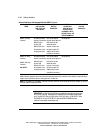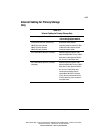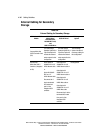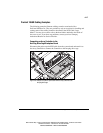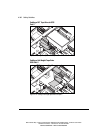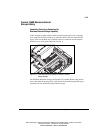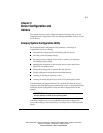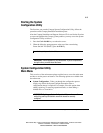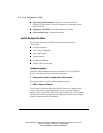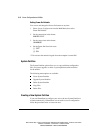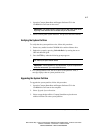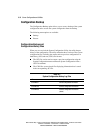
5-2 Server Configuration and Utilities
Writer: Michele Wray Project: Compaq ProLiant 1850R Setup and Installation Guide Comments: 333172-002
File Name: F-CH05.DOC Last Saved On: 12/16/98 10:52 AM
COMPAQ CONFIDENTIAL - NEED TO KNOW REQUIRED
The System Configuration Utility uses option configuration (.CFG) files to set
up and configure the computer. The .CFG files provide information such as
switch settings, IRQs, and software installation guidelines. The .CFG files for
Compaq servers is located on the System Configuration diskettes and Compaq
SmartStart and Support Software CD (SmartStart and Support Software CD).
For PCI boards, the utility reads the configuration options from the PCI board's
configuration space, or as an option, from a PCI configuration file (.PCF).
The .PCF file can be found on the following diskettes or CD-ROM:
Compaq Options Configuration Files diskette
Non-Compaq Option Configuration Files diskette
Compaq SmartStart and Support Software CD
The .CFG file provides board resource requirements and switch and jumper
setting alternatives. Although ISA boards do not have the automatic
configuration capabilities of PCI boards, the System Configuration Utility can
allocate system resources to these boards and provide instructions for setting
switches and jumpers.
Resolving Resource Conflicts
If you add a PCI expansion board after the initial startup, the system detects this
change when you turn on the computer. The system ROM reads the PCI board
identifier and compares it with the current configuration information stored in
nonvolatile memory. The system ROM automatically configures PCI boards.
If a user selection is required, the system ROM enables the board with its
default settings and provides a POST message advising to use the System
Configuration Utility to view or change the default settings. Additionally, you
can change the default automatic settings by running the System Configuration
Utility.
The System Configuration Utility reads the option configuration .CFG files to
determine any resource conflicts, such as two devices requiring the same
hardware interrupt. If the system identifies a conflict, the software then rechecks
all the expansion board specifications to determine if settings for a previously
read board can be changed to automatically resolve the conflict between the two
boards.




